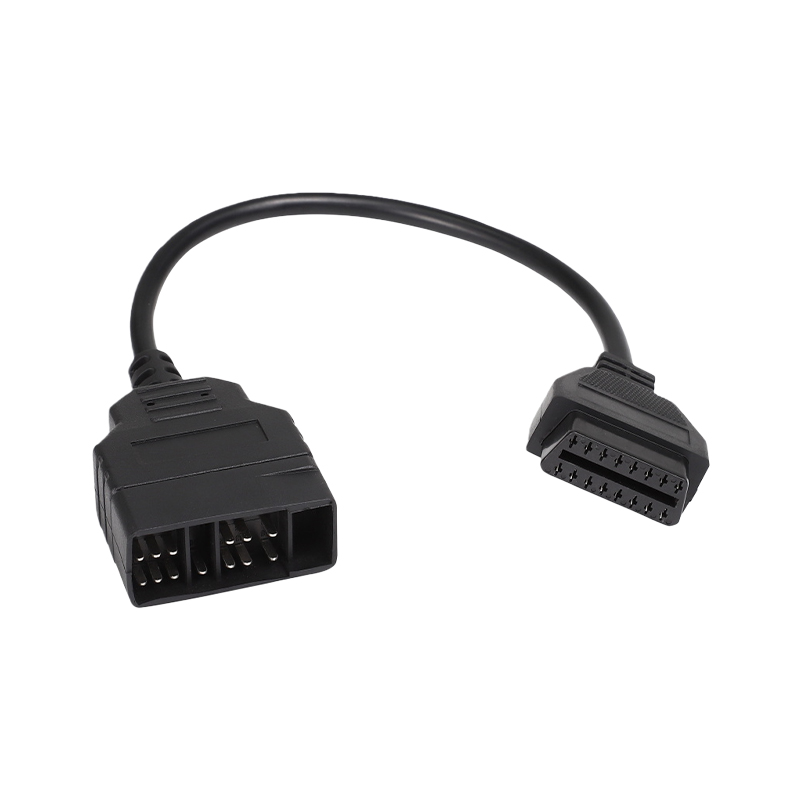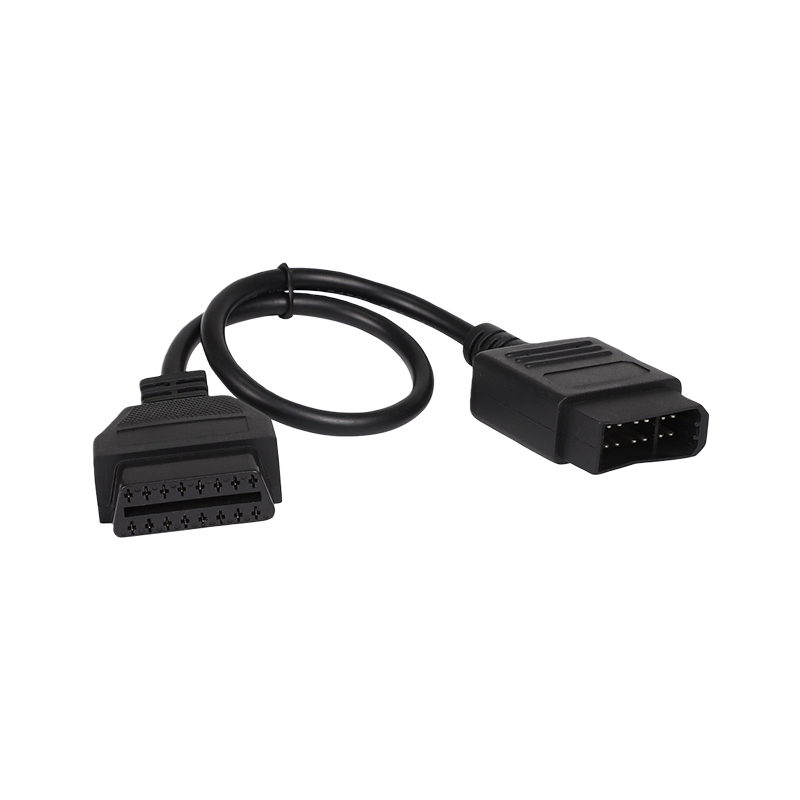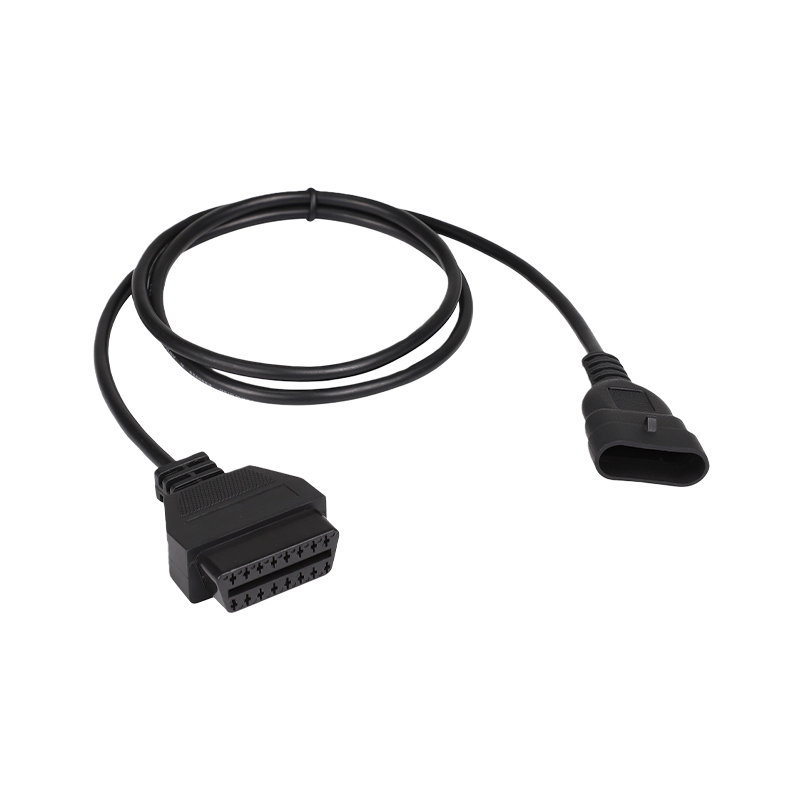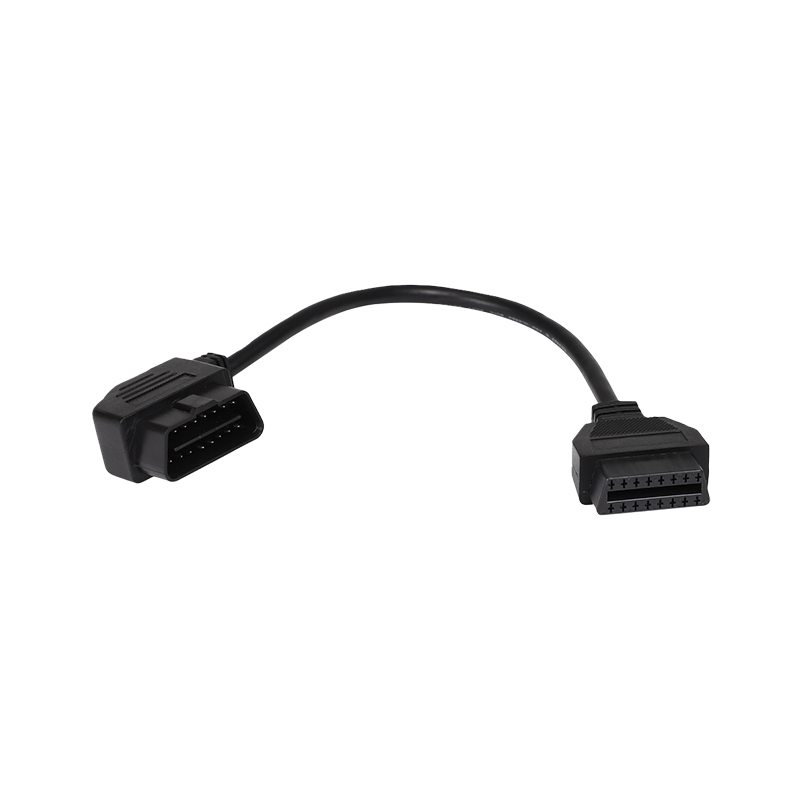Can the OBD connector ensure stable signal transmission and reduce data loss or communication interruptions?
Release Time : 2025-10-08
In modern automotive electronic systems, the OBD connector is no longer just a simple physical interface; it serves as the "nerve center" for data communication between the vehicle and the outside world. It carries critical data such as engine status, emissions information, fault codes, real-time vehicle speed, and fuel consumption, and serves as the sole gateway for vehicle information to diagnostic equipment, dashcams, remote monitoring terminals, and even intelligent driver assistance systems. Therefore, the stability of the OBD connector directly determines whether these devices can accurately and continuously read vehicle data, avoiding misjudgments, functional failures, and even safety hazards caused by communication interruptions or data loss.
Signal transmission stability depends primarily on the connector's internal electrical design. High-quality OBD connectors utilize a highly conductive copper alloy as the contact terminal material and are plated with gold or tin to ensure low contact resistance despite prolonged insertion and removal and in complex environments. This treatment not only improves electrical conductivity but also effectively prevents the formation of an oxide layer, preventing signal attenuation or interruption due to poor contact. Each pin is precisely positioned to ensure accurate connection with the corresponding contact on the vehicle's OBD port, avoiding misalignment, loose connections, or short circuits. Good contact quality is essential for stable communication. Even slight resistance fluctuations can be amplified in high-speed data transmission, leading to frame loss or parity errors.
The complex operating environment of a vehicle poses significant challenges to OBD connectors. High engine compartment temperatures, constant chassis vibration during driving, moisture penetration during rainy weather, and condensation from air conditioning can all affect connector performance. A well-designed OBD connector must exhibit excellent environmental adaptability. Its housing is constructed of high-temperature-resistant engineering plastic, ensuring structural stability in extreme temperatures without softening or cracking. The sealing structure effectively blocks dust, oil, and moisture intrusion, preventing corrosion or short circuits on internal contacts. A locking mechanism ensures the connector remains secure even on bumpy roads, maintaining a continuous physical connection. These mechanical and protective features together form a physical barrier for stable signal transmission.
Electromagnetic interference is another critical factor in in-vehicle communications. Modern vehicles are filled with a variety of electronic control units, motors, and wireless devices, creating an extremely complex electromagnetic environment. Without effective shielding, external interference can be coupled into communication lines through cables or interfaces, leading to data corruption. High-end OBD connectors typically feature a metal shielded casing or internal shielding layer, enclosing the signal lines in a low-noise environment and suppressing common-mode interference and radio frequency interference. Furthermore, appropriate wire sequence design and differential signal processing technology further enhance anti-interference capabilities, ensuring reliable operation of key communication protocols such as the CAN bus even in high-noise environments.
In practical applications, signal stability is also reflected in compatibility and support for multiple communication protocols. OBD interfaces must adapt to the communication standards of different vehicle models, such as CAN, K-Line, and LIN. The connector's electrical characteristics must meet the impedance matching, signal level, and timing accuracy requirements of these protocols. A stable OBD connector can maintain signal integrity when switching between different protocols, avoiding communication interruptions caused by protocol recognition failures or baud rate deviations.
Furthermore, with the prevalence of connected car devices, OBD interfaces are often used to simultaneously connect multiple devices, such as GPS trackers, driving behavior analyzers, and remote diagnostic modules. This multi-device sharing scenario places higher demands on the connector's load capacity and signal isolation. A high-quality OBD splitter or expansion connector can rationally distribute power and signal channels, preventing mutual interference and ensuring that each device can independently and stably access the required data.
In summary, the OBD connector can achieve long-term stable signal transmission through careful material selection, reliable structural design, effective environmental protection, and electromagnetic shielding. It is not only a "gateway" for vehicle data but also a "gatekeeper" for the flow of information in the era of smart mobility. Choosing a highly stable OBD connector provides solid protection for every data exchange, ensuring clear visibility of vehicle status and the reliable implementation of smart applications.
Signal transmission stability depends primarily on the connector's internal electrical design. High-quality OBD connectors utilize a highly conductive copper alloy as the contact terminal material and are plated with gold or tin to ensure low contact resistance despite prolonged insertion and removal and in complex environments. This treatment not only improves electrical conductivity but also effectively prevents the formation of an oxide layer, preventing signal attenuation or interruption due to poor contact. Each pin is precisely positioned to ensure accurate connection with the corresponding contact on the vehicle's OBD port, avoiding misalignment, loose connections, or short circuits. Good contact quality is essential for stable communication. Even slight resistance fluctuations can be amplified in high-speed data transmission, leading to frame loss or parity errors.
The complex operating environment of a vehicle poses significant challenges to OBD connectors. High engine compartment temperatures, constant chassis vibration during driving, moisture penetration during rainy weather, and condensation from air conditioning can all affect connector performance. A well-designed OBD connector must exhibit excellent environmental adaptability. Its housing is constructed of high-temperature-resistant engineering plastic, ensuring structural stability in extreme temperatures without softening or cracking. The sealing structure effectively blocks dust, oil, and moisture intrusion, preventing corrosion or short circuits on internal contacts. A locking mechanism ensures the connector remains secure even on bumpy roads, maintaining a continuous physical connection. These mechanical and protective features together form a physical barrier for stable signal transmission.
Electromagnetic interference is another critical factor in in-vehicle communications. Modern vehicles are filled with a variety of electronic control units, motors, and wireless devices, creating an extremely complex electromagnetic environment. Without effective shielding, external interference can be coupled into communication lines through cables or interfaces, leading to data corruption. High-end OBD connectors typically feature a metal shielded casing or internal shielding layer, enclosing the signal lines in a low-noise environment and suppressing common-mode interference and radio frequency interference. Furthermore, appropriate wire sequence design and differential signal processing technology further enhance anti-interference capabilities, ensuring reliable operation of key communication protocols such as the CAN bus even in high-noise environments.
In practical applications, signal stability is also reflected in compatibility and support for multiple communication protocols. OBD interfaces must adapt to the communication standards of different vehicle models, such as CAN, K-Line, and LIN. The connector's electrical characteristics must meet the impedance matching, signal level, and timing accuracy requirements of these protocols. A stable OBD connector can maintain signal integrity when switching between different protocols, avoiding communication interruptions caused by protocol recognition failures or baud rate deviations.
Furthermore, with the prevalence of connected car devices, OBD interfaces are often used to simultaneously connect multiple devices, such as GPS trackers, driving behavior analyzers, and remote diagnostic modules. This multi-device sharing scenario places higher demands on the connector's load capacity and signal isolation. A high-quality OBD splitter or expansion connector can rationally distribute power and signal channels, preventing mutual interference and ensuring that each device can independently and stably access the required data.
In summary, the OBD connector can achieve long-term stable signal transmission through careful material selection, reliable structural design, effective environmental protection, and electromagnetic shielding. It is not only a "gateway" for vehicle data but also a "gatekeeper" for the flow of information in the era of smart mobility. Choosing a highly stable OBD connector provides solid protection for every data exchange, ensuring clear visibility of vehicle status and the reliable implementation of smart applications.







